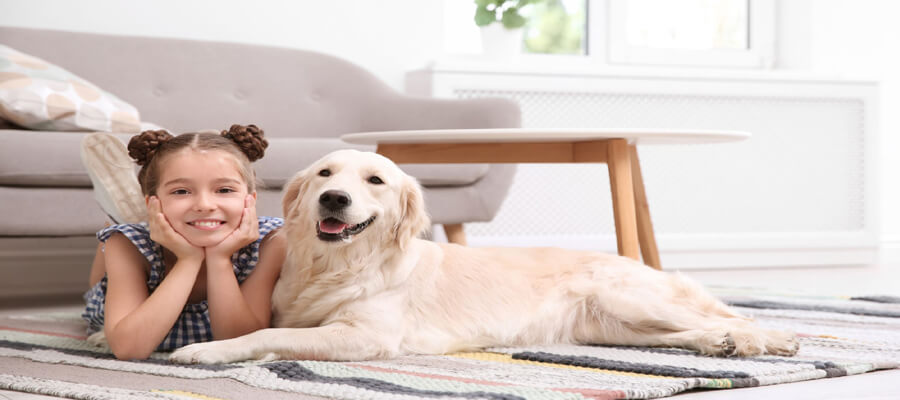
How to Secure Your Home for a New Puppy
Secure Your Home for a New Puppy
Introduction
Welcoming a new puppy into your home is an exciting adventure filled with joy, cuddles, and playful moments. However, it also comes with the responsibility of ensuring a safe environment for your new furry friend. Puppies are naturally curious and love to explore their surroundings, which can lead to potential hazards if your home isn’t properly secured. This guide will provide you with essential steps to puppy-proof your home, ensuring a safe and happy environment for your new companion.
1. Assess Your Home Environment
Why It’s Important: Understanding your living space is the first step in identifying potential dangers.
- Walk Through Your Home: Take a detailed tour of your house and yard, noting areas that could pose risks to a curious puppy.
- Identify Potential Hazards: Look for items that can be chewed, swallowed, or cause injury, such as cords, plants, and small objects.
2. Create a Safe Space
Essentials for Your Newly Adopted Pet
Welcoming a shelter pet into your life is a beautiful journey. Here are some handpicked items to help your new friend feel safe, loved, and right at home:
Why It’s Important: A designated safe area can help your puppy feel secure and minimize access to hazards.
- Choose a Safe Room: Designate a room or area where your puppy can explore freely. This could be a living room or a puppy-proofed laundry room.
- Use Baby Gates: Install baby gates to restrict access to areas of your home that may be unsafe or off-limits.
3. Remove Toxic Plants and Items
Why It’s Important: Some common household items and plants are toxic to dogs and can pose serious health risks.
- Research Toxic Plants: Remove any plants from your home and yard that are harmful to dogs, such as lilies, azaleas, and sago palms.
- Store Cleaning Supplies Safely: Keep all cleaning products, chemicals, and medicines in locked cabinets or high shelves, out of reach of curious noses.
4. Secure Cords and Wires
Why It’s Important: Puppies often chew on electrical cords, which can lead to electrical shocks or fires.
- Use Cord Covers: Invest in cord protectors or covers to keep cords safe from gnawing teeth.
- Tuck Away Loose Cords: Keep all wires neatly organized and secured, using clips or ties to prevent access.
5. Store Small Objects and Hazardous Items
Why It’s Important: Puppies love to explore with their mouths, and small objects can pose choking hazards.
- Declutter Your Home: Remove any small items that could be ingested, such as coins, batteries, and toys with small parts.
- Use Storage Bins: Keep toys and other small objects in labeled bins or boxes to minimize clutter and hazards.
6. Puppy-Proof Your Furniture
Why It’s Important: Puppies may climb or chew on furniture, which can lead to damage or injury.
- Use Furniture Covers: Protect furniture with covers or blankets to prevent chewing and damage.
- Remove Fragile Items: Take away any breakable items from coffee tables, shelves, or areas within reach of your puppy.
7. Check Fencing and Outdoor Areas
Why It’s Important: A secure yard is essential for your puppy's safety during outdoor play.
- Inspect Fences: Check for gaps, holes, or weaknesses in your fence. Ensure it is tall enough to prevent jumping.
- Supervise Outdoor Time: Always supervise your puppy when outside, especially until you are confident in their recall and boundaries.
8. Prepare for Crate Training
Why It’s Important: Crate training provides a safe haven for your puppy and helps with house training.
- Choose the Right Crate: Select a crate that is appropriate for your puppy’s size and comfort. Ensure it has enough space for them to stand, turn around, and lie down.
- Make It Comfortable: Add a soft bed or blanket to the crate to make it inviting and cozy.
9. Establish a Routine
Why It’s Important: Routines help puppies feel secure and understand what to expect.
- Set a Feeding Schedule: Feed your puppy at the same times each day to establish a routine and predict bathroom breaks.
- Incorporate Playtime and Training: Allocate time for play and training to keep your puppy mentally stimulated and well-behaved.
10. Educate Yourself and Your Family
Why It’s Important: Understanding puppy behavior and care is crucial for a harmonious home.
- Research Puppy Care: Read books or attend classes about puppy training and care to ensure you’re well-prepared.
- Involve Family Members: Ensure that everyone in your household is aware of puppy-proofing measures and how to interact safely with the new addition.
Conclusion
Securing your home for a new puppy is a vital step in ensuring a safe and happy environment for your furry friend. By assessing your home, creating a safe space, and removing potential hazards, you can create a nurturing atmosphere where your puppy can thrive. Remember, preparation and vigilance are key to preventing accidents and ensuring a positive experience for both you and your new companion. With the right precautions in place, you can focus on the joy and love that a puppy brings to your life.
Affiliate Products
We may earn a small commission when you shop through our links — it helps us keep sharing love and care for every dog out there, at no extra cost to you.
Up to 75% Discount

Dog Collar with Health Monitoring
BUY NOW »
Up to 55% Discount

Luxury Faux Furhuge Napping Bed
BUY NOW »

